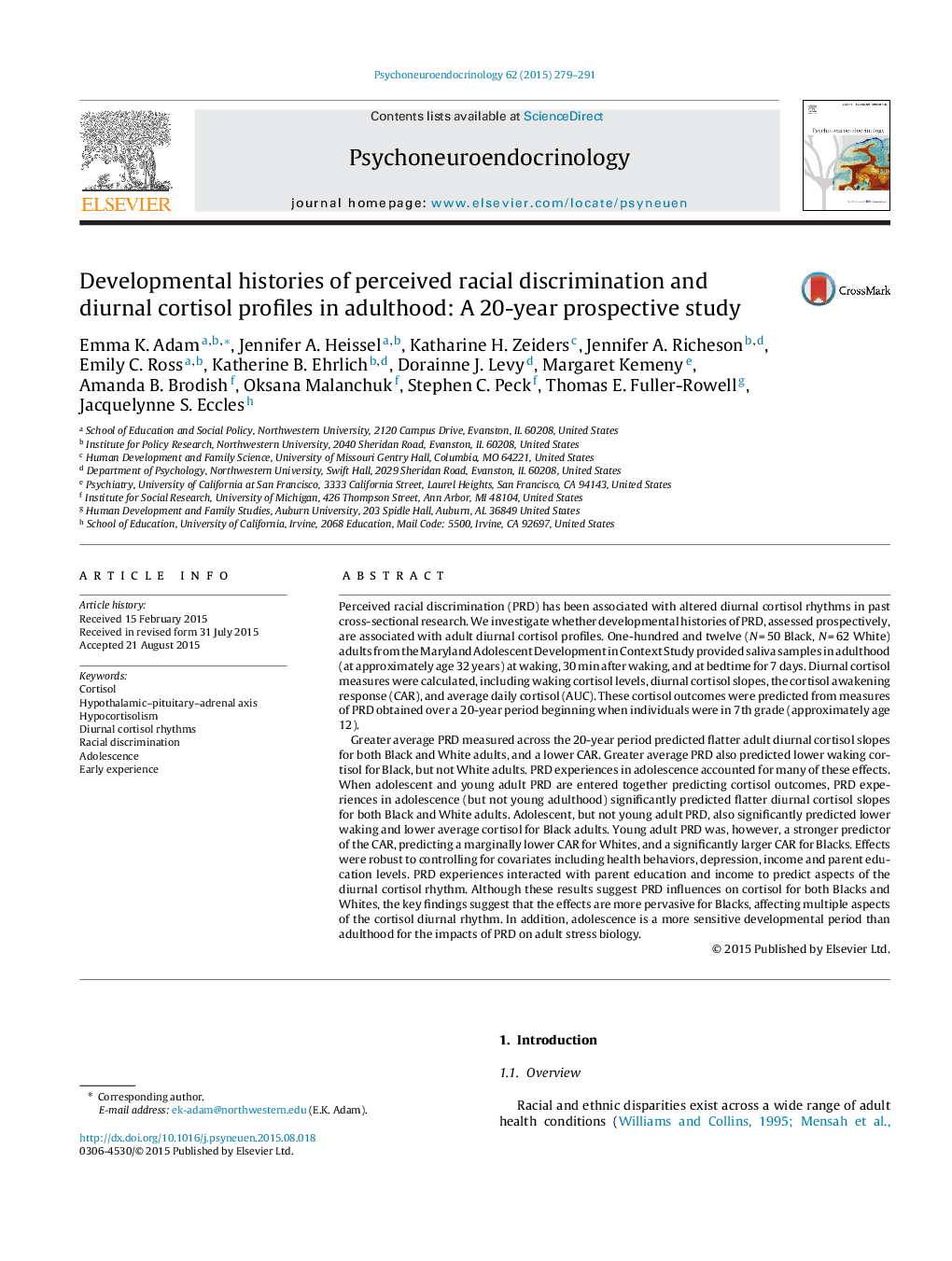| Article ID | Journal | Published Year | Pages | File Type |
|---|---|---|---|---|
| 6818587 | Psychoneuroendocrinology | 2015 | 13 Pages |
Abstract
Greater average PRD measured across the 20-year period predicted flatter adult diurnal cortisol slopes for both Black and White adults, and a lower CAR. Greater average PRD also predicted lower waking cortisol for Black, but not White adults. PRD experiences in adolescence accounted for many of these effects. When adolescent and young adult PRD are entered together predicting cortisol outcomes, PRD experiences in adolescence (but not young adulthood) significantly predicted flatter diurnal cortisol slopes for both Black and White adults. Adolescent, but not young adult PRD, also significantly predicted lower waking and lower average cortisol for Black adults. Young adult PRD was, however, a stronger predictor of the CAR, predicting a marginally lower CAR for Whites, and a significantly larger CAR for Blacks. Effects were robust to controlling for covariates including health behaviors, depression, income and parent education levels. PRD experiences interacted with parent education and income to predict aspects of the diurnal cortisol rhythm. Although these results suggest PRD influences on cortisol for both Blacks and Whites, the key findings suggest that the effects are more pervasive for Blacks, affecting multiple aspects of the cortisol diurnal rhythm. In addition, adolescence is a more sensitive developmental period than adulthood for the impacts of PRD on adult stress biology.
Keywords
Related Topics
Life Sciences
Biochemistry, Genetics and Molecular Biology
Endocrinology
Authors
Emma K. Adam, Jennifer A. Heissel, Katharine H. Zeiders, Jennifer A. Richeson, Emily C. Ross, Katherine B. Ehrlich, Dorainne J. Levy, Margaret Kemeny, Amanda B. Brodish, Oksana Malanchuk, Stephen C. Peck, Thomas E. Fuller-Rowell, Jacquelynne S. Eccles,
